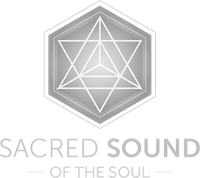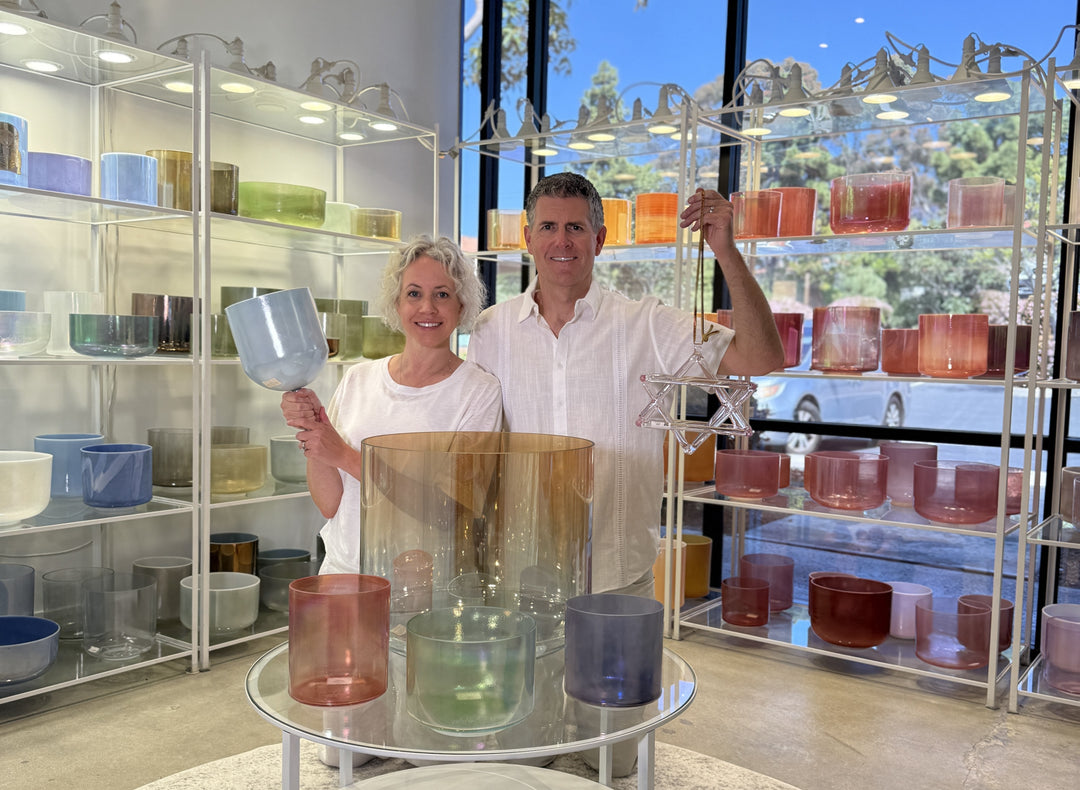Tibetan Singing Bowls vs Crystal Singing Bowls: A Comprehensive Comparison

If you're in the market for a singing bowl, you may be wondering about the differences between Tibetan singing bowls and crystal singing bowls. Both types of bowls have unique qualities and benefits, and understanding these differences can help you choose the perfect bowl for your needs. In this guide,
we'll explore the characteristics of each type of bowl and help you make an informed decision.
History and Origins of Tibetan and Crystal Singing Bowls
It is said that Tibetan singing bowls have been used for centuries or even thousands of years in Tibetan Buddhist meditation practices. They are believed to have originated in the Himalayan region and were traditionally made from a combination of seven metals. Travelers to the region and many Tibetan bowl
resellers and enthusiast have recounted personal stories of the use of these bowls in sacred ceremonies throughout the years in Nepal and Tibet. But there is no widely known historical evidence or consensus about the use of these bowls in Sound Healing prior to the 1960’s, and some have said that these bowls were previously used as utility for food and other purposes, and only as sound healing tools since the time of Western tourism and travel to these areas.
we'll explore the characteristics of each type of bowl and help you make an informed decision.
History and Origins of Tibetan and Crystal Singing Bowls
It is said that Tibetan singing bowls have been used for centuries or even thousands of years in Tibetan Buddhist meditation practices. They are believed to have originated in the Himalayan region and were traditionally made from a combination of seven metals. Travelers to the region and many Tibetan bowl
resellers and enthusiast have recounted personal stories of the use of these bowls in sacred ceremonies throughout the years in Nepal and Tibet. But there is no widely known historical evidence or consensus about the use of these bowls in Sound Healing prior to the 1960’s, and some have said that these bowls were previously used as utility for food and other purposes, and only as sound healing tools since the time of Western tourism and travel to these areas.
Crystal singing bowls are a more recent development, dating back to the 1980s. At some point the discarded pure quartz crucibles used in manufacturing silicon wafers were discovered to have amazing properties of sound resonance which could be felt in the body when played. This incredible feeling of resonance we get when playing crystal singing bowls is what quickly led to many musicians, healers and spiritual workers incorporating them into their work. They are now very widely used in sound healing practices.
Materials and Manufacturing Processes
Tibetan singing bowls are traditionally made from a combination of seven metals, including copper, tin, and iron. The exact composition of the metals can vary depending on the region and the specific bowl maker. Antique Tibetan bowls were crafted by hand using traditional techniques passed down through
generations in the Himalayas. Modern Tibetan bowls being manufactured in almost every industrial country now, but mostly in China with a high amount of automation and machine intervention. Many modern manufactured Tibetan bowls are made to look distressed and antique to increase the value, so
the buyer needs to beware of possible antique imitations.
Crystal singing bowls are made from pure quartz crystal that is heated and molded into shape. Depending on the type and source of your crystal bowls this manufacturing process can be automated or hand crafted, with most of the frosted style of crystal singing bowls being manufactured in factories in China. Less is known about the manufacturing processes of more expensive clear and alchemy bowls as they are closely held competitive advantages of those
manufacturers.
Sound Quality and Characteristics
Another key difference between Tibetan singing bowls and crystal singing bowls is the sound characteristics they produce. Tibetan singing bowls are known for their rich, warm, and deep tones that can create a sense of sacred space, relaxation, and calm. The sound is often described as earthy and grounding. The main differentiator of Tibetan singing bowls are their complexity in overtones, and because those overtones often differ from the note and temperament of the fundamental note they are more easily heard. These complex overtones create the rich sound people identify with a temple or sacred space. When bowls are combined and played together a less precise combination of notes is required, dissonance is typically heard in these combinations but it is usually tolerated by the listeners because of the beauty in the complexity of the sound produced.
Materials and Manufacturing Processes
Tibetan singing bowls are traditionally made from a combination of seven metals, including copper, tin, and iron. The exact composition of the metals can vary depending on the region and the specific bowl maker. Antique Tibetan bowls were crafted by hand using traditional techniques passed down through
generations in the Himalayas. Modern Tibetan bowls being manufactured in almost every industrial country now, but mostly in China with a high amount of automation and machine intervention. Many modern manufactured Tibetan bowls are made to look distressed and antique to increase the value, so
the buyer needs to beware of possible antique imitations.
Crystal singing bowls are made from pure quartz crystal that is heated and molded into shape. Depending on the type and source of your crystal bowls this manufacturing process can be automated or hand crafted, with most of the frosted style of crystal singing bowls being manufactured in factories in China. Less is known about the manufacturing processes of more expensive clear and alchemy bowls as they are closely held competitive advantages of those
manufacturers.
Sound Quality and Characteristics
Another key difference between Tibetan singing bowls and crystal singing bowls is the sound characteristics they produce. Tibetan singing bowls are known for their rich, warm, and deep tones that can create a sense of sacred space, relaxation, and calm. The sound is often described as earthy and grounding. The main differentiator of Tibetan singing bowls are their complexity in overtones, and because those overtones often differ from the note and temperament of the fundamental note they are more easily heard. These complex overtones create the rich sound people identify with a temple or sacred space. When bowls are combined and played together a less precise combination of notes is required, dissonance is typically heard in these combinations but it is usually tolerated by the listeners because of the beauty in the complexity of the sound produced.
Crystal singing bowls, while they also can produce rich, warm and deep tones, usually produce a clear and pure tone with harmonic overtones that are less distinguished. Several of these bowls in harmonic chords are often played together to create transcendent and angelic qualities. The sound is often
described as ethereal and uplifting.
Healing, Meditation, and other Benefits
Both types of bowls can help to balance and harmonize the body’s energy centers, or chakras, and promote a sense of relaxation and inner peace.
described as ethereal and uplifting.
Healing, Meditation, and other Benefits
Both types of bowls can help to balance and harmonize the body’s energy centers, or chakras, and promote a sense of relaxation and inner peace.
Tibetan bowls can be effective for helping people to find stillness, to center, or to ground. The bowls command respect and attention, almost like we have an inner memory of another life spent in a sacred temple in worship where the bowls were often used. They usually calm the nervous system, slow the breath and pulse, and provide an anchor like a Drishti for balance in the moment. Tibetan bowl practitioners will often hold the bowls while playing or play them while they are placed on the body of their clients, creating a direct transmission of vibration from the bowls to the body. These direct vibrations may have healing and pain reduction properties, and sometimes have the power to reach more desensitized or agitated individuals.
Although crystal singing bowls also have relaxing, grounding and centering properties, crystal singing bowls very often have an impact at the other end of the sound healing spectrum. This means having an impact of uplifting and energizing, inspiring euphoric feelings of joy and love, increasing creativity and clarity in decision making. The feelings can sometimes be described almost as an upward ascension into an ethereal or otherworldly and angelic space. Alchemy Crystal Singing Bowls have even further amplification of the qualities of crystal singing bowls, with many mixed in gemstones, elements, or minerals that create possibilities for added connection with the bowls and other benefits.
To see a list of the beautiful alchemy singing bowls we have available click here. You can listen to them too!




